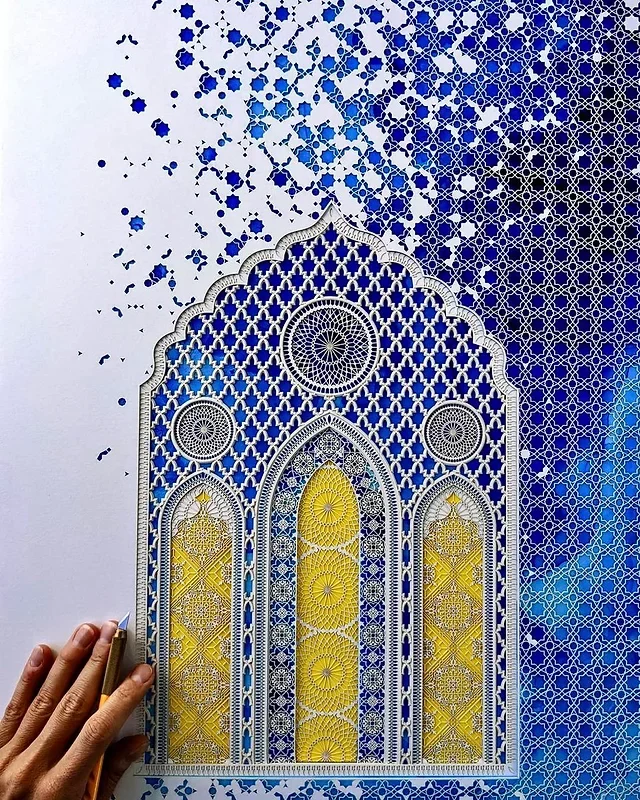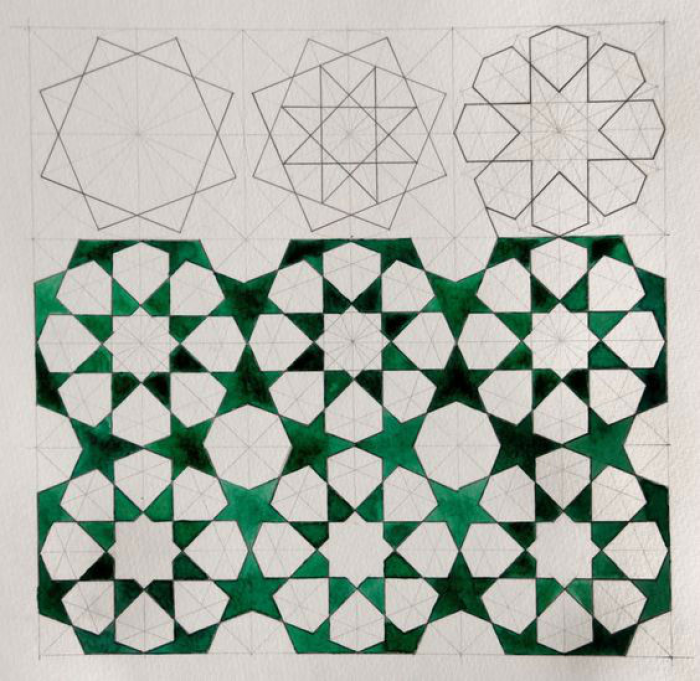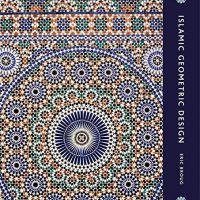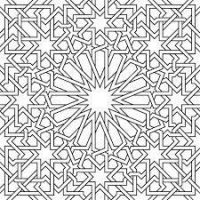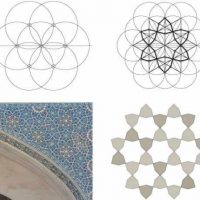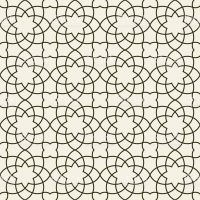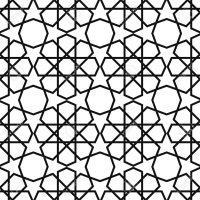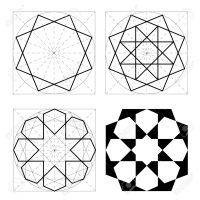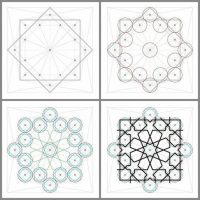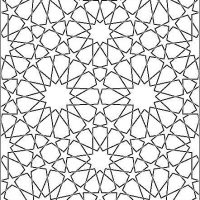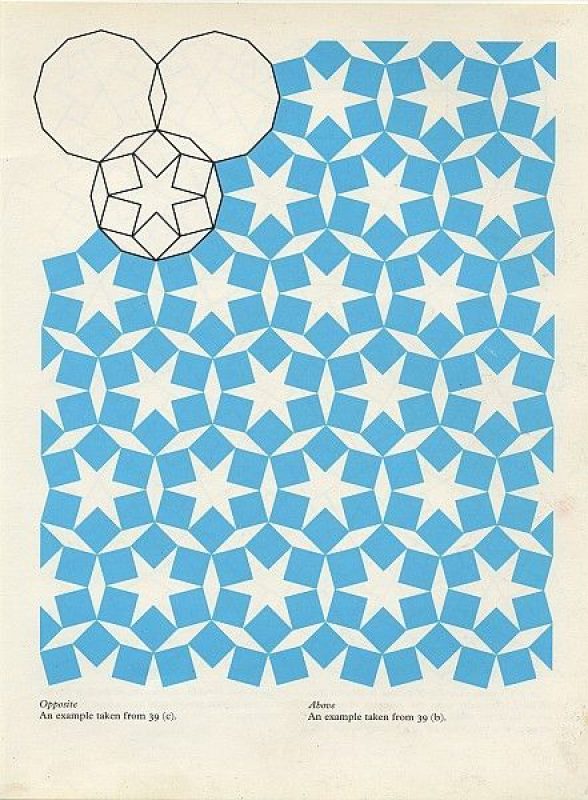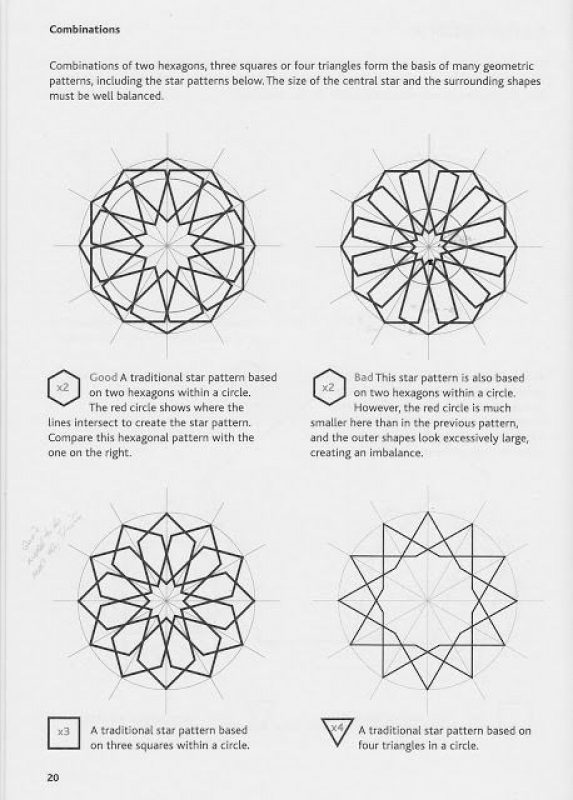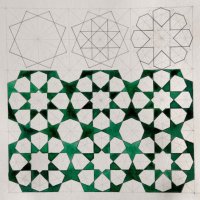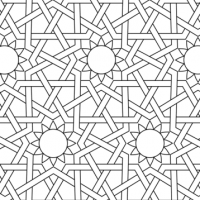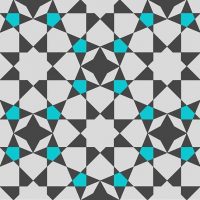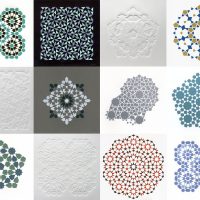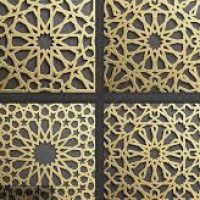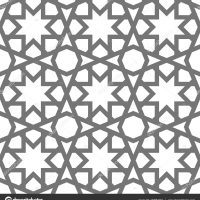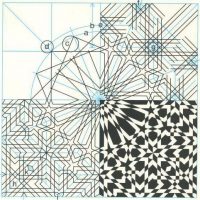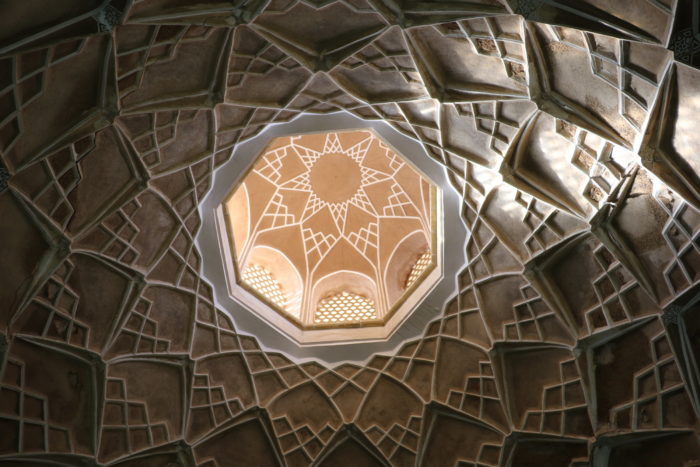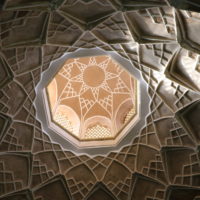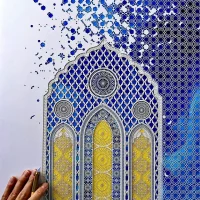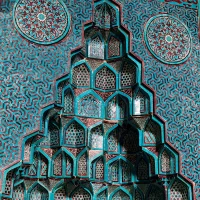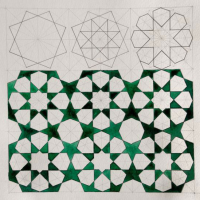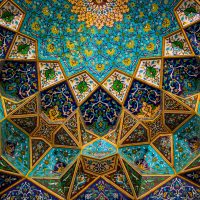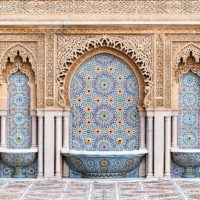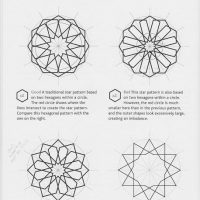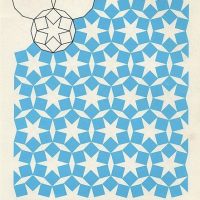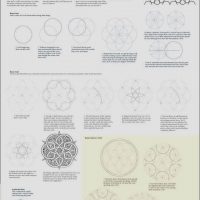Islamic architecture can inspire contemporary architecture because it has its unique charm. If you dig deep down to the base of this charm, you will find it has a lot to do with geometric Islamic patterns. While precedent architecture styles freely used figurative images, motifs, and sculptures of humans and animals to add aesthetic value to their buildings, Islamic architecture couldn’t follow the same path.
Figurative images of this kind were avoided so as not to become an object of worship. That left Muslim craftsmen and artists with three options: calligraphy, floral or Arabesque patterns, and geometric patterns.
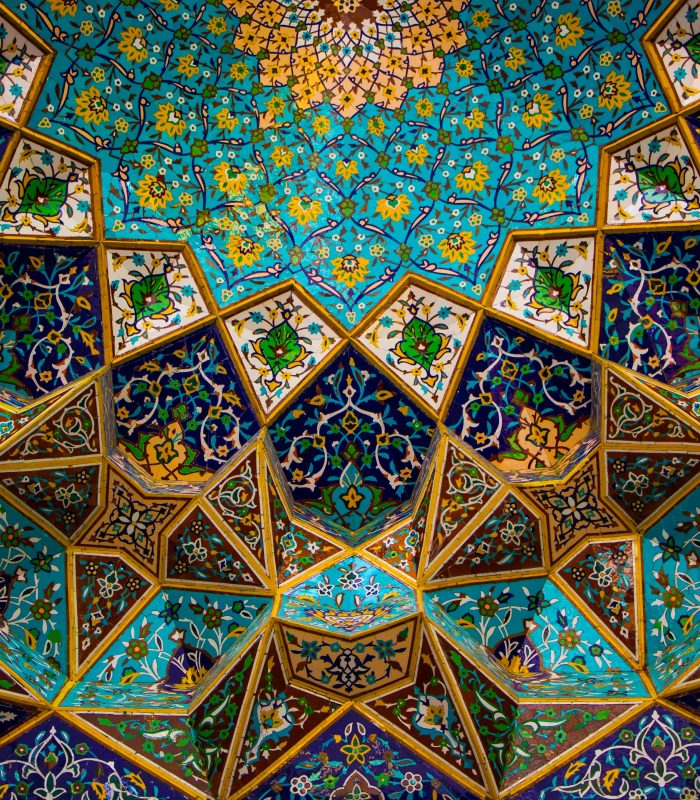
Courtesy of imhussain
What is Islamic Art?
The term “Islamic art” describes any visual work created by Muslims. It covers a vast geographical area, time period, and numerous artistic disciplines like architecture, calligraphy, art pottery, and needlework. It’s a vague concept that’s hard to pin down because it includes works created by Muslim and non-Muslim people living in culturally Islamic communities.
Islamic art has been around for about 1400 years and includes religious and secular works. Designing and equipping sacred spaces and writing religious texts are all examples of religious forms. In its earliest forms, it was influenced by Roman, early Christian, and Sassanian art; Chinese influences can also be seen in Islamic painting, pottery, and fabrics.
The Intricate Charm of Islamic Patterns and How to Create Them:
Islamic craftsmen created tremendous patterns with exquisite details using rulers and compasses. They were influenced by the ancient Greek rules of Mathematics, which they have artistically taken to a whole new level.
However complicated the pattern may seem, it is always based on a grid and a series of iterated lines and shapes. These patterns have evolved with time and changed with different regions. They were used to decorate pottery, tiles, rugs, wooden partitions, screens, walls, and ceilings.
Islamic patterns are still being adopted up to this day in many forms. They are used in furniture, rugs, screens, prints, and other decorative elements to give a Middle Eastern touch to different spaces. They are also sometimes featured in the façades of buildings like mosques and some city buildings, and cultural institutes.
If these meticulous patterns’ geometry fascinates you, why not learn how to create them? Many artists specializing in patterns in general and Islamic patterns, in particular, share their knowledge online for free with those who want to learn. Here, we have gathered a list of tutorials and videos to check and apply. It is impressive how a composition transforms from the initial simple lines and curves to the marvelous complicated geometries we see.
Also read:-Islamic Architecture In India: Awe-inspiring Fusion of Subtleness and Elegance
- Islamic Patterns
- Islamic Patterns
- Islamic Patterns
- Islamic Patterns
- Islamic Patterns
- Islamic Patterns
- Islamic Patterns
- Islamic Patterns
First, these are available tutorials on Envato Tuts+ by Lebanese calligraphy artist Joumana Medlej.
Geometric Design: Two Variations on an Islamic Tiling Pattern
Geometric Design: Create a Pattern from the Cordoba Synagogue
Geometric Design: Tenfold Star in a Rectangle
These are simple tutorials posted and shared by various Instagram and Pinterest users.
- Islamic Patterns
- Islamic Patterns
- Islamic Patterns
- Islamic Patterns
- Islamic Patterns
- Islamic Patterns
- Islamic Patterns
- Islamic Patterns
Also, here are some Video Tutorials on Youtube which can be helpful for those who would rather see the process in motion. This video by TED-ED is presented by Eric Bourg, a Dutch educator and an artist interested in Islamic geometrical design, who works on it and has written books about it. It simply explains the logic behind these patterns.
Also read:- 6 Breathtaking Worship House Designs Nobody’s Talking About
The Pattern in Islamic Art
The website offers an archive of over 4000 images of Islamic patterns and other design features from the Islamic culture, known as the WADE archive. It includes drawings, diagrams, scans, and selected photographs.
Islamic Patterns Video Tutorials
1. The complex geometry of Islamic design – Eric Broug
Now, here are some tutorial videos and playlists by various artists.
2. How to draw – geometry – basic construction of an extended 12-fold rosette?
Check the rest of Lex Wilson’s Geometry tutorials on his playlist.
3. How to draw an Islamic Geometric Pattern?
Check the rest of Nora Youssef’s tutorials on Youtube.
4. How to Draw Islamic Geometry
Check the rest of Samira Mian’s tutorials on her playlist: Islamic Geometry – How to draw Islamic Geometric Patterns. If the art of Islamic patterns has captured your interest. Then, you may find this resource quite handy.
What is the Purpose of Islamic Patterns?
Islamic patterns depict abstract ideas and emotions rather than realistic depictions of real-world objects, yet they often show geographic influences and crossovers with paintings from other civilizations. Human figures are rarely seen in Islamic art because they are seen as a kind of worship forbidden in Islam. As a result, Islamic art has always been more concerned with calligraphy and geometric themes than sculpture and painting.
There are multiple ways in which the eternal nature of Allah is seen in Islamic patterns. For instance, circles have no beginning or end. Intricate geometric patterns in Islamic art are often repeated endlessly, giving the sense that each pattern element has a unique function.
Islamic art conveys a sense of spirituality and tradition. Islamic art is consistent because it is grounded on the belief in Allah’s wholeness and existence. Islamic art isn’t meant to be a copy of something else; that would be dishonoring to Allah, who created the original.
As a result, Islamic artists strive to symbolically reflect the underlying ideas and values embedded within everyday objects. Islamic art is centered on what would satisfy Allah, who is at the core of the lives of all Muslims.
FAQS:
What are Islamic patterns called?
Arabesques are the names of recurring geometric patterns that feature floral motifs.
What are common Islamic patterns?
The four most common geometric shapes in Islamic geometric patterns are the circle, square, star, and multi-sided polygon. The two most fundamental forms are the circle and the square. The eight-pointed star is a staple of Islamic design, and its origins can be traced back to squares or triangles embossed within a circle.
What are the 4 types of Islamic design?
Calligraphy, human and animal figures, plant and floral motifs, and geometric designs are Islamic art's four main decorative elements. All sorts of surfaces are decorated with these designs, individually or in various combinations.
What are 5 architectural design elements that exist in all mosques?
Typically, a modern mosque will contain a prayer hall, a dome, minarets to call worshippers to prayer, a mihrab (a sanctuary for the person leading prayer), and an ablution room (a place to wash one's hands and feet before prayer).
- ©Islamic Illumination
- ©Bayt Al Fann
- Jameh Mosque of Yazd, Iran. ©iStock
- Islamic Patterns
- Islamic Patterns
- Islamic Patterns
- Islamic Patterns
- Islamic Patterns
- Islamic Patterns
- Islamic Patterns
- Islamic Patterns
- Islamic Patterns
- Islamic Patterns
- Islamic Patterns
- Islamic Patterns
- Islamic Patterns
- Islamic Patterns
- Islamic Patterns
- Image via patterninislamicart.com
- Courtesy of imhussain
- Mosque Hassan in Rabat, Morocco Richard Sharrocks / Getty Images
- Courtesy of Joumana Medlej
- Courtesy of Joumana Medlej
- Courtesy of Joumana Medlej


